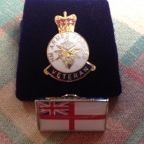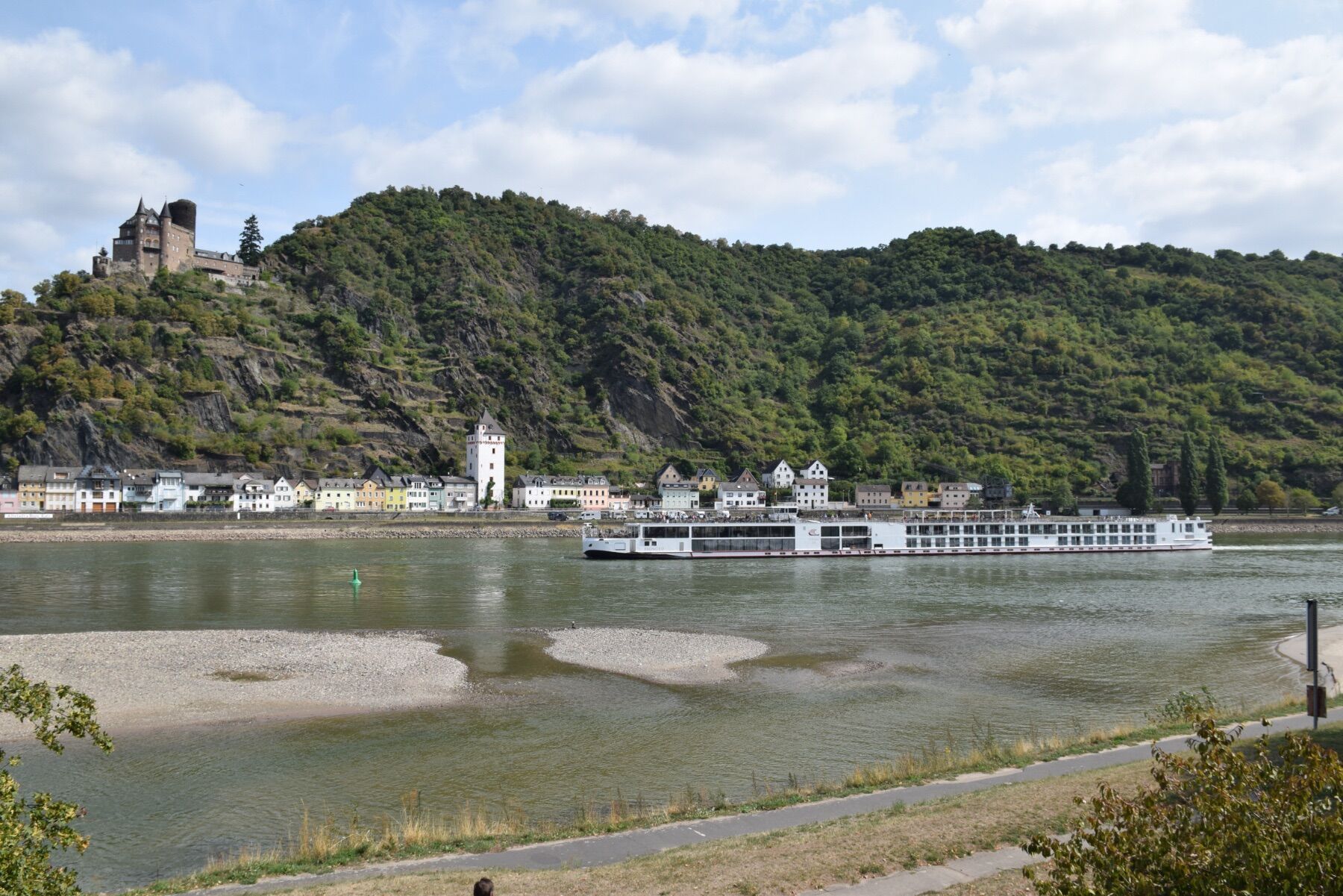

Pluto
Patron-
Posts
4,518 -
Joined
-
Last visited
-
Days Won
2
Pluto last won the day on March 4 2024
Pluto had the most liked content!
About Pluto

Profile Information
-
Gender
Male
-
Location
Brighouse
-
Interests
European inland waterway history, including the transfer of technology during the early industrial revolution; wooden boat construction on inland waterways; the history of opening bridges; and the L&LC.
-
Occupation
industrial historian
-
Boat Name
Pluto
Recent Profile Visitors
18,456 profile views
Pluto's Achievements
-

Water Shortage - not just the leisure network
Pluto replied to magpie patrick's topic in General Boating
-

New Aqueducts - especially as part of restoration
Pluto replied to magpie patrick's topic in History & Heritage
The Schwechat Aqueduct on the Wiener Neustadt Kanal, seen here in 2002. The canal was partially restored for powering turbines in some of the locks. -
I go to both as I have been assessed for new shoulder joints which are usually done at Halifax. Having just moved from Barnoldswick and the care of Blackburn/Burnley hospitals, they do seem to be more organised and progressive in Calderdale. And my new GP practice seems MUCH more responsive.
-
That's what comes of living in a hotbed of non-conformism, where they take their religion seriously. I must take a bible with me when I go for physio at Huddersfield Royal tomorrow!
-
Don't bother looking at church pews re a bed-hole, as the pews were designed to keep you awake. Sermons in Victorian times tended to be somewhat long.
-
I have come across several prosecutions by the L&LC re coal, and the A&CN must have been at it as well.
-
Very little written paperwork has survived, and the researcher has to rely upon transcriptions or printed material. One of the best canal archives is that for the Rochdale Canal, and though I have not been through that thoroughly, I found very little when looking for material relevant to paddle gear changes. As someone who has looked at archive material over many years, I am always wary of anyone suggesting it 'must' survive, without giving any useful examples. As I suggested earlier, I have found both sill and cill used in canal records of all types, so there is no specific spelling. I have attached the text of a report by someone spying on the Sankey coal trade for the L&LC in 1816, which a rare example of poorly spelt text I have found amongst canal archives. 1816 Sankey coal inspection. by L&LC.pdf
-
We are talking about a time when work was done by craftsmen supervised by management who had often worked on the tools. No one year contracts then, with many workers whose family had worked on the canal for generations. As with many such skilled jobs, the spoken word was the norm and, with poor quality education, many people then could probably be called dyslectic today.
-
Having done extensive historical research into lock and lockgate construction, I can safely say that both versions, 'sill' and 'cill', appear in drawings and notes produced by canal maintenance men throughout the 19th and 20th century. Try as I might, I could not find any particular reason for either spelling. There is very little 18th century material, and when it comes to detailed canal engineering there are really only European books, such as Belidor's Architecture Hydraulique, with nothing definitive on canal engineering in English. As a result, names would have been handed down by word of mouth, making variations highly likely, and names for specific details often differ from canal to canal. Have a look at my chapter in the HNBC booklet on canal heritage.
-
Is this a different Norton to Peter Norton whose book, Railways and Waterways of Warrington, was first published by the RCHS? He was certainly a friend of Edward Paget-Tomlinson.
-
Being able to allow for towing at an angle does seem to have been another factor. One boatman I knew said he had a horse which would move over to the edge of the towpath when told to gee-up, making further effort liable to pull the horse into the water. The solution was that when told to gee-up and the horse moved to the canal edge, a quick push would ensure the horse did fall in. It did not go near the edge again. Pulling a boat was a comparatively light occupation for a horse, which had to be used to pulling continually. One of the coal businesses on the L&LC bought horses from the Manx Tramway - when pulling a tram was getting a bit like hard work, the horse still had several useful years working on the canal.
-
The table doesn't transfer properly if I just paste from a Word document. The pdf downloads for me, so it must be you! The reference to market boats is a bit of a red herring, though they continued to operate on many canals well after packet boats finished. RAIL 844/243, pp274-275 Packet Boats v Fly Boats 30th March 1821 … I beg leave next to call the attention of the Committee to the Fly Boats and the Packet Hawlers. As to the Fly Boats, I feel very certain that they carry nearly as many Passengers as the Packets latterly. I have not mentioned the circumstances to the Bankrangers, but sometime ago I did to some of them and the reply was, that if information were laid by them, they should not consider themselves safe. I beg to state as my opinion that some Plan should be adopted to put down the carrying of Passengers by these Boats also submit to them at once. I cannot see any middle course. Respecting the hauling of the Packets, I am not aware of any serious cause of Complaint, except against Beesley of the Preston and who I believe generally loses from 15 to 20 minutes In going by the Packet I have often heard it regretted that a little more time was not allowed at Lancaster, now if they were compelled to keep time it might be done as under: Hours Mins Kendal to the Locks, including 6 minutes for the Tunnel 2 54 The Locks 0 45 The Locks to Lancaster 2 47 At Lancaster 0 30 The next stage, 15 miles including 4 minutes for the stoppage at Garstang 3 16 Thence to Preston 3 12 This would make it 24 minutes after seven when the Packet arrives at Preston, the arrival at Kendal would be about 10 minutes later in consequence of the Locks taking more time to fill than to empty. William Crossley 1860-3-23 market boat, RAIL 844/327 Preston, March 23, 1860. B P Gregson, Esq. Sir, I have frequently complained of the late arrival of the Market boat from Garstang, and I wish you would see John Birchall in order to have this rectified. Today the boat arrived at noon, and last week it arrived between nine and 10 in the fore noon. Now some of the potatoes have to be forwarded by train to other places for Saturdays market, and when the boat arrives late this cannot be done. I have repeatedly told the captain that they should come through to Preston without stopping, and then rest here. If they would do this, and get in by 7, 8 or half past 8 in the morning it would prevent many complaints, and they would always have a free course under the bridges before the coal trains began to arrive. You’re obedient servant John Green. 1873-10-31 market boat, RAIL 844/327 J. Greenall, Lancaster Canal, Preston, Oct 31, 1873. Mr J Slinger. Dear Sir, at the time I write (between 7 and 😎 the Market Boat has not turned up and from enquiries I have made it cannot get here before more morning. We have some at 4 or 5 tons for Garstang. The Progress got here light about 4 pm. I saw the Captain and he said his orders were to wait until tomorrow for his own cargo, and if it did not come, then he was to load for us. Half an hour after this I heard that Darlington had offered the Captain 5/- extra (my offer has been to the owners), and sought the Captain at once, and took him with me to Dewhurst Hoyle & Cos office. Mr Williamson at first would have repudiated any agreement, but afterwards acknowledged that owing to Thompson forwarding them so many loading he was obliged to withdraw his promise. I have seen Ashcroft’s book keeper today and also Henry himself and I have a promise of one perhaps two boats tomorrow. One boat has arrived, but it has to take manure as he is under a contract with Potter. I will telegraph when any boat is loaded for Bailie, but I am never safe until the cargo or part of it is loaded. Yours truly, J Greenall.
-
The Lancaster Canal Engineers reports do include the information people are looking for, as he gives the timetable. Note that he also differentiates between flyboats and packets. There is a specific use for each on northern canals. RAIL 844:243, pp274-275 Packet Boats v Fly Boats.pdf
-
-
There are two comparatively recent books on this subject. Passenger Boats on Inland Waterways, D D Gladwin, Oakwood Press, 1979. Swifts & Queens, A I Bowman, Auld Kirk Museum Publications No 9, 1984.













